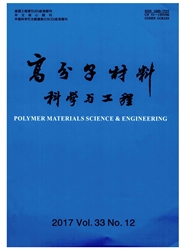

 中文摘要:
中文摘要:
采用岛津试验机与改进的分离式霍普金森压杆(SHPB)试验装置,得到了两种分别用作汽车坐垫和靠垫材料的软质聚氨酯泡沫在不同应变率下的应力应变曲线。实验结果表明,材料强度对密度和应变率敏感。动态条件下,泡沫密实后,横向惯性效应导致泡沫被拉坏。而准静态变形达到80%时,卸载后变形仍能回复。评价两种泡沫的吸能特性时,发现两种密度的海绵动态吸能性能比静态时要差。最后对坐垫泡沫的厚度进行了优化设计。
 英文摘要:
英文摘要:
The flexible polyurethane foams with two densities were separately used in automotive seat cushion and back cushion.The stress-strain curves were obtained at various strain rates using a servo-hydraulic testing machine and a modified split Hopkinson pressure bar(SHPB) apparatus.The results show that the strength of foams is sensitive to density and strain-rate.Under dynamic loading,lateral inertia effects lead to tensile failure of the foam when the deformation is in the densification regime.However,the foams can return to its original shape under quasi-static loading after the pressure upon the foam is released,even if the compressive strain reached 80%.In addition,the cushioning properties of the foams were valued on basis of stress-strain curves.The results show the maximum efficiency of energy absorption under impact loading is lower than that under quasi-static loading.In the end,an example was given for designing the optimum thickness of the foam seat cushion.
 同期刊论文项目
同期刊论文项目
 同项目期刊论文
同项目期刊论文
 期刊信息
期刊信息
